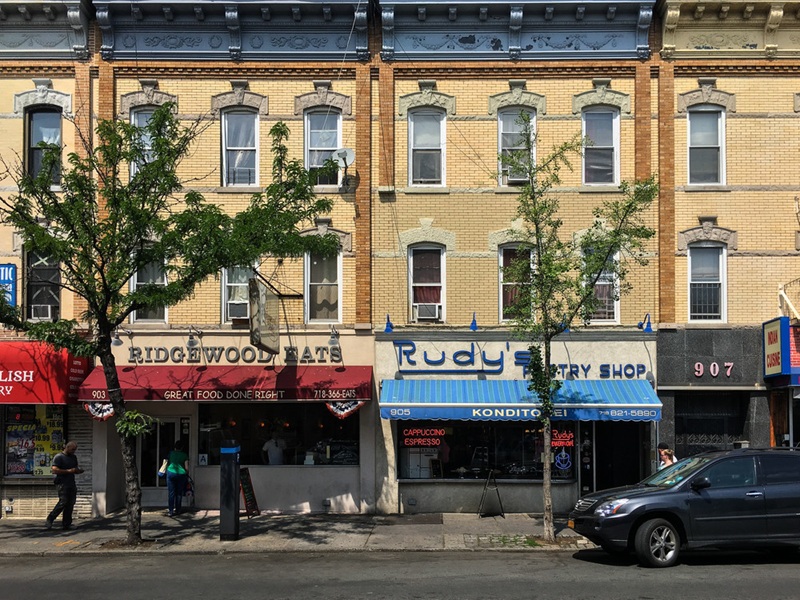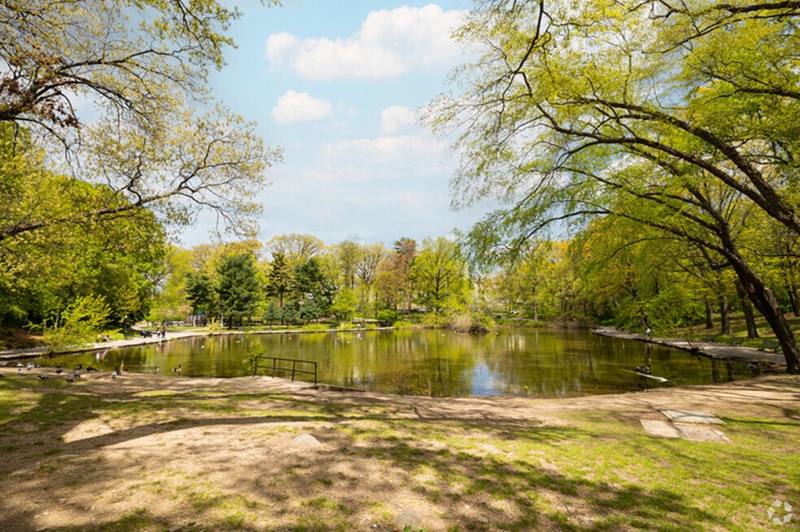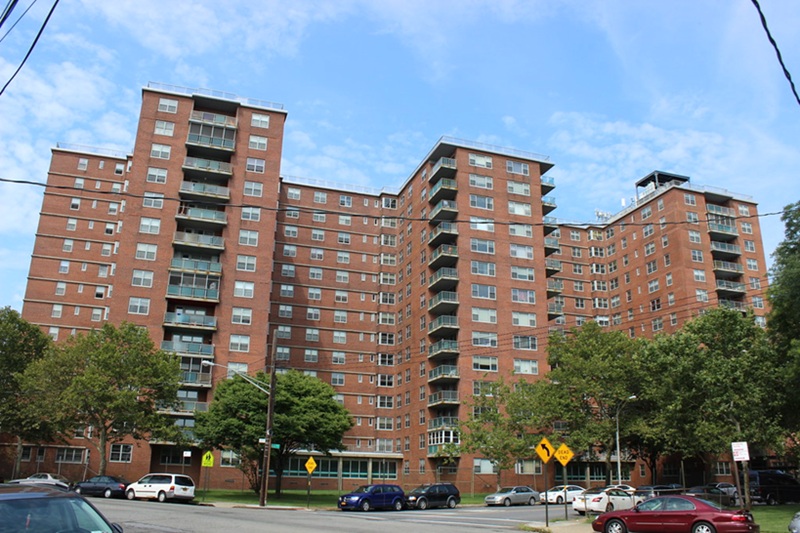
Ridgewood, located in the western section of Queens, New York, is a neighborhood with a rich history and a modern, vibrant culture. As one of the borough’s oldest residential communities, Ridgewood has seen significant growth and transformation in recent years. Once a predominantly industrial area, it has evolved into a sought-after residential enclave that attracts a diverse mix of families, young professionals, and artists. With its mix of old and new, historic architecture, strong community ties, and increasing popularity, Ridgewood is a neighborhood that embodies the spirit of reinvention and cultural vitality.
History and Development
Ridgewood’s history can be traced back to the early 19th century, when it was originally farmland and small settlements. As part of the Town of Newtown, Ridgewood was largely rural until the late 19th century, when its proximity to the rapidly growing city of New York fueled its urbanization. The arrival of the Long Island Rail Road (LIRR) in the mid-1800s connected the area to Manhattan and helped pave the way for its development into a residential neighborhood.
In the early 20th century, Ridgewood began to flourish as industrial growth took hold in nearby areas. Many workers from the factories settled in Ridgewood, attracted by the relatively affordable housing. The neighborhood grew quickly, with rows of brick houses and multi-family dwellings becoming the hallmark of its residential streets.
By the mid-20th century, Ridgewood was known for its thriving German and Italian immigrant communities, who established businesses, churches, and schools that helped shape the neighborhood’s character. Over time, as with much of New York City, Ridgewood became home to waves of new immigrants from different parts of the world. This diversity is evident today, as Ridgewood is home to a variety of cultures, including a large Latino population, as well as smaller groups from Eastern Europe and Asia.
Modern-Day Ridgewood: Gentrification and Transformation
In recent years, Ridgewood has become an increasingly popular neighborhood for younger people and artists, drawn to its relatively affordable housing, proximity to Brooklyn, and vibrant community spirit. Just across the border from Bushwick, which has experienced significant gentrification, Ridgewood has seen a rise in trendy cafes, art galleries, and boutique shops. This shift has brought with it a wave of development, particularly in the form of new apartment buildings, townhouses, and renovated loft spaces that appeal to young professionals and creatives.
Despite the influx of new residents, Ridgewood still retains a strong sense of its working-class roots. The neighborhood’s long-standing businesses, including family-owned delis, diners, and bakeries, continue to thrive. This blend of old and new makes Ridgewood a neighborhood with a unique character that stands apart from its more heavily gentrified neighbors.
While the area has become more expensive in recent years, it is still considered relatively affordable compared to the rapidly rising prices in Brooklyn and other parts of Queens. This balance between development and maintaining the integrity of the neighborhood’s character makes Ridgewood an attractive place to live for those seeking an authentic, community-oriented environment.
Community and Culture
Ridgewood is a neighborhood that is deeply rooted in community and local pride. The residents, who come from a diverse array of backgrounds, are active in maintaining the neighborhood’s sense of identity. Local events, such as street fairs, cultural festivals, and farmers’ markets, provide opportunities for residents to connect with each other and celebrate their shared history.
The neighborhood’s cultural diversity is reflected in its vibrant food scene, where residents can find a mix of old-world European bakeries, Italian trattorias, Mexican taquerias, and Dominican restaurants. Ridgewood’s German heritage is still present in some of the neighborhood’s long-standing businesses, including German beer halls and delicatessens, which serve up hearty meals and locally brewed beer.
The artistic community in Ridgewood has flourished in recent years, with the neighborhood becoming home to a growing number of galleries, creative spaces, and independent artists. The presence of the Ridgewood Art Space, a hub for local artists, along with the increase in murals and public art installations, has contributed to the neighborhood’s reputation as an up-and-coming creative center in Queens.
Additionally, the neighborhood boasts several cultural institutions, such as St. Matthias Church, which serves as a center for religious and community activities, and the Ridgewood Library, which offers educational programs, events, and a wealth of resources for residents of all ages.
Residential Life and Housing
Ridgewood is known for its charming, residential streets, which are lined with tree-lined sidewalks and classic brownstones and townhouses. The neighborhood’s residential real estate is a blend of historic architecture and more modern developments, making it an appealing place for those looking for character and convenience. Ridgewood’s housing stock includes multi-family homes, apartment buildings, and loft spaces, as well as newly constructed developments aimed at attracting renters and homeowners alike.
One of the key aspects of Ridgewood’s residential appeal is the variety of housing options available. From affordable apartments in classic pre-war buildings to newly renovated lofts and modern luxury developments, Ridgewood offers something for a wide range of budgets. As the neighborhood continues to attract young professionals, families, and artists, housing prices have been on the rise, but Ridgewood remains more affordable than its Brooklyn counterparts, offering a reasonable alternative for those priced out of areas like Williamsburg and Bushwick.
The neighborhood’s real estate market has also seen an uptick in interest from developers, with new condominium projects and commercial spaces reshaping some of the neighborhood’s more industrial sections. However, despite the ongoing development, many of the classic aspects of Ridgewood remain intact, including its historic buildings and quiet, residential character.
Transportation and Accessibility
Ridgewood offers excellent transportation options, making it easy for residents to commute to other parts of New York City. The neighborhood is served by the L train at the Halsey Street and Myrtle-Wyckoff Avenues stations, offering direct access to Manhattan and parts of Brooklyn. Additionally, the Q55 and Q58 bus routes serve the neighborhood, connecting it to nearby areas such as Forest Hills and Bushwick.
Ridgewood’s location, close to the Brooklyn-Queens border, provides residents with easy access to both Brooklyn and Queens, as well as Manhattan. Its proximity to the L train, which runs through Williamsburg and Bushwick, also makes it a popular choice for people who work in Brooklyn but prefer to live in a less expensive area.
For those who drive, Ridgewood is well connected to major highways, including the Brooklyn-Queens Expressway (BQE) and the Long Island Expressway (LIE), offering easy access to the rest of the city and beyond.
Parks and Green Spaces
Although Ridgewood is largely an urban area, it offers several nearby parks and green spaces that provide opportunities for outdoor recreation. Highland Park, located just to the east of Ridgewood, is one of the largest parks in the area, offering walking paths, sports fields, and a peaceful environment for residents to relax and enjoy nature. The Ridgewood Reservoir, located within Highland Park, is a popular spot for birdwatching, jogging, and enjoying the natural surroundings.
In addition to Highland Park, Forest Park, which is located to the south of Ridgewood, offers even more green space, including extensive hiking and biking trails, as well as sports facilities and picnic areas. These parks serve as crucial recreational resources for the community, providing residents with space for outdoor activities, relaxation, and social gatherings.
Conclusion
Ridgewood is a neighborhood that successfully blends its rich history with modern-day trends, making it one of the most dynamic and appealing areas in Queens. With its historic homes, vibrant arts scene, strong community spirit, and growing real estate market, Ridgewood is a place that attracts both those looking to preserve tradition and those eager to embrace change. Whether you’re strolling through its tree-lined streets, enjoying local cuisine, or visiting one of its community events, Ridgewood offers a welcoming and creative atmosphere that continues to thrive in the heart of Queens.

